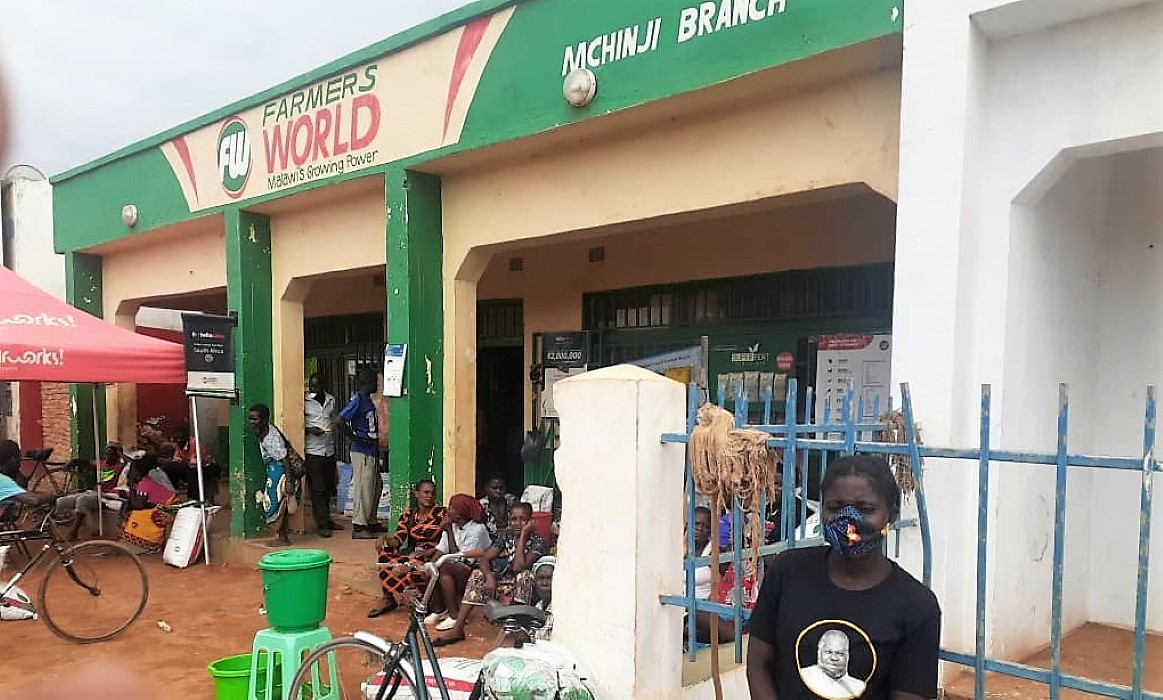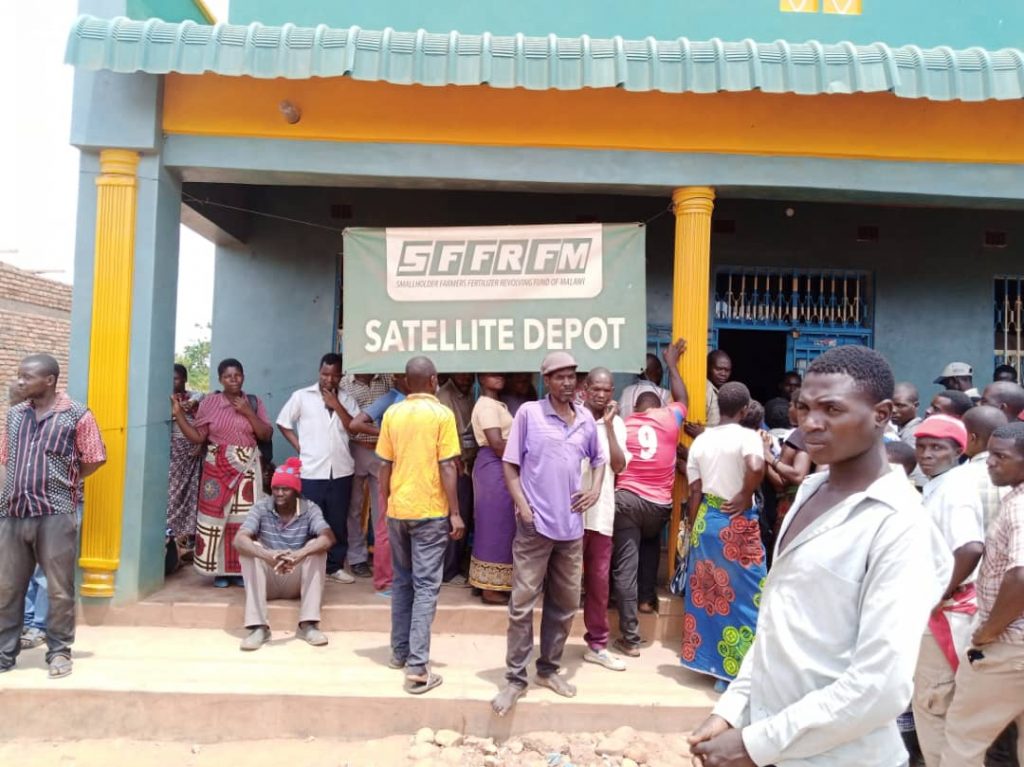COVID-19 and price uncertainties in grain marketing in Malawi

In the third and final blog of the series on grain marketing in Malawi, APRA researcher Stevier Kaiyatsa looks at the contributing effects of COVID-19 on grain price instability, the implication of this, and what the Malawian government can do to tackle the problem.
Part one examined the role played by small-scale traders in the grain supply chains of Malawi, while part two looked at how farmers are being exploited by some of these traders.
For more on the impact of COVID-19 on Food Systems and Rural Livelihoods in Malawi, read our round one and round two country reports.
Access the full APRA synthesis report on the Rapid Assessment of the Impact of COVID-19 on Food Systems and Rural Livelihoods in Sub-Saharan Africa, for free, here.
Written by Stevier Kaiyatsa
Malawi recorded its first COVID-19 case on 2 April 2020. Prior to the first COVID-19 case, the former President Peter Mutharika declared the disease a national disaster on 23 March 2020. The government closed schools and banned large gatherings as measures to control the spread of the disease. Further, the government announced a 21-day lockdown on 14 April that would run from 18 April to 9 May 2020. However, the Malawi High Court barred the government from implementing the lockdown on the basis that the Human Rights Defenders Coalition petitioned for more consultations on how to protect the livelihoods of poor and vulnerable Malawians.
Post-harvest period
The post-harvest period in Malawi starts in April, when small-scale traders buy agricultural produce from smallholder farmers. The APRA Malawi team has observed that fewer small-scale traders purchased grain from rural areas during COVID-19. As indicated in part one of this blog series, small-scale traders operate at different scales, namely; low-tier, mid-tier, and top-tier. Thus, COVID-19 created a situation where the big buyers, including local processors, were uncertain on the future of grain markets within and across national borders, which affected the grain supply chain.
Between April and July 2020, most countries implemented lockdowns with additional border controls, so it became risky for the big buyers to invest in grain – particularly those that rely on export markets. Rural areas did not see an influx of top-tier small-scale traders in the midst of COVID-19 relative to the previous years. Thus, it become difficult for the big buyers to purchase the grain through top-tier small-scale traders. As a result, the low-tier and mid-tier small-scale traders were the only ones that were purchasing grain from smallholder farmers since they use their own savings to invest in the grain trade. Although the mid-tier small-scale traders were functioning, their level of operation was affected by trading in smaller quantities, and therefore less trips to sell their grain to the big traders in urban areas.
Grain price instability
As we transition from the lean period (i.e. from October to March) when the grain is scarce to the post-harvest period (i.e. from April to September) when grain is abundant, the overall price of grain drops. Then, the price starts to increase as the post-harvest period progresses. As usual, purchasing prices were lower at the onset of the post-harvest period and farmers expected the prices to increase as the season progressed. However, due to lower competition among the grain traders, coupled with increased supply of the grain on the market, the price of grain continued to drop. For instance, at the onset of the post-harvest period in April, the price of soybean was MWK250 (US$0.33)[1] per kg, but it dropped to MWK180 (US$0.24) per kg in May, and reached as low as MWK150 (US$0.20) per kg in July. Compared to the previous season, the price of soybean increased to MWK320 (US$0.42) per kg in July 2019. Further, the purchasing price of groundnuts was MWK550 (US$0.73) per kg in April, but the price dropped to MWK500 (US$0.66) per kg in May and reached as low as MWK450 (US$0.60) per kg in July, while it was trading at MWK700 (US$0.93) per kg in July 2019. However, I observe that the price for maize grain remained unchanged between April and July 2020 at MWK120 (US$0.16) per kg in most food markets, on average. This might make sense, given that maize grain is a staple crop while soybean and groundnuts are cash crops for smallholder farmers in Malawi. Both mid-tier and low-tier small-scale traders might have enjoyed lower purchasing prices between April and July 2020.

Implication of unstable grain prices
The lower grain prices that most smallholder farmers were offered have implications for smallholder farmers’ income and food security. Smallholder farmers that produce smaller quantities had no option but to sell their produce at very lower prices, while those that have other sources of income are hoarding their grain in anticipation of better prices in the lean period. The lower output prices have eroded farmers’ income, limiting their access to productivity enhancing technologies, such as improved seed and fertilisers, for the next growing season. Therefore, it is more likely that most farmers will not be able to invest in farming to produce greater market surpluses, which will directly compromise their food consumption and agricultural income. Conversely, small-scale traders have aggregated grain at lower prices in anticipation of better prices in the future should big buyers such as the Agricultural Development and Marketing Corporation (ADMARC), the National Food Reserve Agency (NFRA), the National Association of Smallholder Farmers of Malawi (NASFAM), and processors open up their markets as the lean period progresses.
Conclusions
As low levels of COVID-19 continues, the government has reopened schools and lifted the ban on large gatherings. However, uncertainty regarding the future of grain markets both local and across the borders continues to grow among grain traders. This has affected the incomes of smallholder farmers, which may lead to lower production in the upcoming growing season, particularly for non-staple commodities such as soybean and groundnuts. Further, through the Affordable Input Programme (AIP), a successor to the Farm Input Subsidy Programme (FISP), the government has invested about MWK160 billion (US$212.5 million) to subsidize maize production for about 4.3 million smallholder farmers. AIP beneficiary would be able to purchase two bags of fertiliser (NPK and UREA) weighing 50 kg at MWK4, 495 (US$5.97) each, a pack of maize, rice or sorghum seed weighing 7 kg at MWK2, 000 (US$2.66). Unlike the FISP, AIP does not subsidise legume seed for pigeon peas, cowpeas, beans, soybean, and groundnuts.
As a result, we should expect a decrease in the production of legumes including soybean and groundnuts in the upcoming growing season due to smallholder farmers’ limited access to legume seed and an increase in maize production.
A separate investment by government to procure expected surplus maize will be required to protect the incomes of smallholder farmers. One way is to fund ADMARC and NFRA in time to allow them to open up their markets early in the season and procure the maize grain directly from smallholder farmers. This would eliminate grain traders particularly top-tier small-scale traders in the supply chain that benefit at the expense of smallholder farmers. In the future, AIP should include seed for legumes, which are central to smallholder farmers’ incomes and food security.
[1] US$=MWK753 as of November 2020
Feature photo: A women wears a face mark in Mchinji district, Malawi. Credit: Symon Duwe.
Please note: During this time of uncertainty caused by the COVID-19 pandemic, as for many at this time, some of our APRA work may well be affected but we aim to continue to post regular blogs and news updates on agricultural policy and research.
